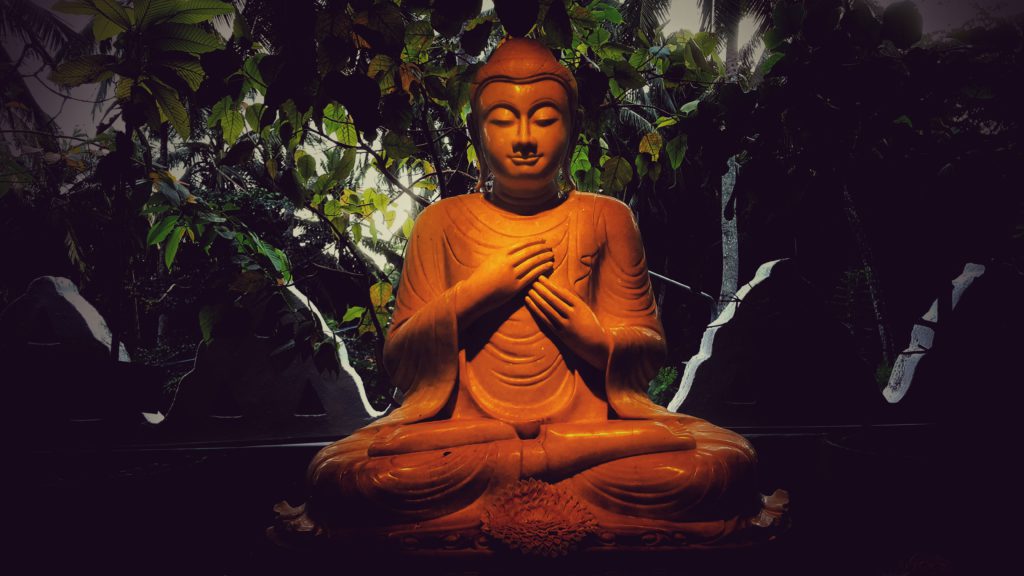Karma is becoming an increasingly popular term in the Western culture and language. However, for those who have not tried to comprehend deeply its meaning yet, this word may bear obscure and extramundane connotations, alluding to the folk belief of a personal retribution law according to the nature of one’s own actions. It is not that plain though as the most crucial aspect of karma lies in the volition of one’s mind.
Karma is intention
Few people know that, in Buddhism, karma is primarily a psychological phenomenon, which can be traced and grasped within the reach of one’s own mind.
The word karma (Pāli, kamma), in its original Sanskrit term, means ‘action’. In Buddhism, there are three types of karma categorised according to three types of action: physical karma (kayakamma), verbal karma (vacikamma) or mental karma (manokamma). The interesting part is that in the Nibbedhika Sutta, a type of Buddhist writings containing the words of the Buddha, we can read: ‘Intention (cetanā) I tell you, is kamma. Intending, one does kamma by way of body, speech, & intellect’ (Anguttara Nikaya n.6.63).
Continuing about intention, cetanā (the Pāli word for intention or volition) means stimulus, motive or drive. It is the ‘pulling’ feel or psychological impulse that makes us carry out certain actions. Therefore, in the sutta just mentioned, we can see that cetanā, as the element present in three types of karmic actions, is what makes any mental, verbal or physical action be karmically effective. This means that neither our conscious thoughts, nor our words, nor our bodily movements are karmically effective by themselves, but they entail karmic potential by virtue of the intention that precedes them.
For instance, if I start yelling at a relative because I don’t like something they’ve done, the act of yelling itself may produce karmic effects only in virtue of its previous and fast-produced mental act of being angry. Therefore, anger, the root of the verbal act of yelling, will then be the sole responsible factor for generating new karma according to some Buddhist texts. The same goes the other way round: if I don’t have the anger in my mind when I suddenly see a child about to touch a poisonous snake and yell at the child to stay away from the snake, in this case, the mental act of being angry is missing, hence the act of yelling, done with an intention to save the child, cannot produce negative karmic effects as in the case of getting angry and then yelling.
Understanding the mind
This mental action, which Buddhism calls volition (cetanā), is therefore the most important factor in the understanding of karma. This is also manifest in this sutta: ‘On the one hand, there is volition, mental or spiritual action. On the other, there is what is born from volition, what a person does after having willed, namely bodily and vocal action’ (AN., III. 415).
Hence, by understanding volition as the proper meaning of karma in its causal sense, it is possible to start conceiving karma not as an outside force influencing our lives, nor as an explanation of life conditions that depend on something beyond our control, as assumed by the folk interpretation; but as an inherent impulse behind our actions (mental, verbal or physical) purely dependent on the mind, that triggers a chain of causes and effects and that ultimately determine the life that we choose to live.
It does not mean, however, that we should wish never to get angry or blame ourselves for getting angry; by understanding what really lies behind karma, we can become more aware of what happens in our mind before each mental, verbal or physical action has taken place which then can give that valuable insight on why we act the way we act and why our life happens the way it happens. This then leads to the transformation of our mind and a life with a greater quality and meaning.
Read A psychological view of karma – part 2: Karmic effects.
If you’d like to know how to train your mind to develop purer and more positive thoughts, words, and actions, you’re welcome to join our 42-day personal development program for free.
Photo credits: Unsplash


